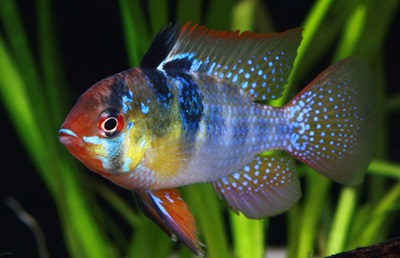
SKU: H726
Ram Cichlid Care Tips
In Stock
Out of Stock
Temporarily Out of Stock
Discontinued
Special Order
Price:
Product Details
Rams and other Dwarf South American Cichlids
Why Keep Them? Rams are very pretty and peaceful dwarf cichlids that will show great coloration after you have them a while. They do not thrive in many traditional community tanks, but they do well if given a separate tank with the proper conditions.
Tank Conditions: Tanks should be 30 gallon or larger. If keeping a breeding pair only, then a 10-20 gallon tank is acceptable. They should have some driftwood and rocks for hiding. An open space in the front of the tank is advised. Provide a dark background and dark colored or natural gravel. We advise live plants for these fish to thrive. Some Indian Almond leaves at the bottom give a natural look and help with water conditions.
Water Conditions: Ram Cichlids are not to be added to a tank that is not at least 6 months established, as they are very sensitive to changing water parameters. They also prefer to have the water much warmer than most other tropical fish, this is due to the very warm temperatures of their natural home, the Orinoco River Basin of Venezuela and Columbia. Apistogrammas are more tolerant, and they can be some of the first additions to a newly cycled aquarium.
It is especially important to keep Nitrates below 20ppm, as these dwarf cichlids species are particularly sensitive to them. This can be achieved by keeping a dense population of fast growing, vast rooting plants like Amazon Sword Plants, Valisneria Gigantea, Cabomba and Anacharis. Floating plants that form strong root systems also are beneficial, like Frogbit, Red Root Floater, Salvinia, and Dwarf Water Lettuce. Another way to maintain low nitrates is by smaller, more frequent water changes. Rather than doing a 30 percent water change once a month, do a 15 percent water change every 2 weeks.
Temperature: 78-85F pH: 5.8-7.4 Nitrates: >20ppm Nitrites: 0ppm Ammonia: 0ppm.
Feeding: Feed two to three times a day. Feed flakes and small pellets. Supplements may include Mysis Shrimp, plankton, frozen bloodworms, daphnia and brine shrimp. Try feeding live Brine and watch the colors shine on your fish as they perform their natural behavior of hunting the live shrimp.
Rams: Rams are often found in several color varieties and fin shapes. You can mix any of them together. The Bolivian ram is a little larger. Rams only grow to about 2.5". Rams inhabit the bottom layers of the tank. They usually will not bother smaller mid-dwelling fish,
Apistogramma Cichlids: Apistogramma is a genus of dwarf South American cichlids. These often do best when kept as pairs. They are cared for in similar ways to the ram, but depending on the species, some like it a bit cooler than others. We usually stock a few varieties, and some of these varieties can be mixed with the Ram Cichlids.
Peaceful Cichlid: Checkerboard Cichlid, Curviceps Cichlid, Thomasi Butterfly Cichlid
Catfish: Corydoras, Pygmy Cory Cat, Glass Catfish, Otocinclus.
Dwarf Gouramis: Dwarf Gouramis, Sunset Gouramis. They also like the warm water and are peaceful. Provide some floating vegetation. Avoid larger gouramis such as Blue, Gold, Pearl, Kissing, Moonlight.
Plants: Moss Balls, Anubias, Cryptocoryne, Water Wisteria, many others.
Snails: Nerite snails.
Tetras: Cardinal Tetra, Rummynose Tetras, Ember Tetras, Gold Tetras, Emperor, Lemon. Make sure to pick smaller, and less aggressive/active tetras. These species also do not mind the water temperature being slightly warmer than most tropical tank temperatures.
Loaches: Kuhli Loach, Crimson Loach.
Avoid: Active aggressive fish. Avoid mixing them in most other community tanks as they do not thrive in most standard community tanks. Apistogrammas are more agreeable to being mixed into community tanks with other fish, while Rams prefer to be a species only tank, with the acception of some small Catfish and Loaches.
Why Keep Them? Rams are very pretty and peaceful dwarf cichlids that will show great coloration after you have them a while. They do not thrive in many traditional community tanks, but they do well if given a separate tank with the proper conditions.
Tank Conditions: Tanks should be 30 gallon or larger. If keeping a breeding pair only, then a 10-20 gallon tank is acceptable. They should have some driftwood and rocks for hiding. An open space in the front of the tank is advised. Provide a dark background and dark colored or natural gravel. We advise live plants for these fish to thrive. Some Indian Almond leaves at the bottom give a natural look and help with water conditions.
Water Conditions: Ram Cichlids are not to be added to a tank that is not at least 6 months established, as they are very sensitive to changing water parameters. They also prefer to have the water much warmer than most other tropical fish, this is due to the very warm temperatures of their natural home, the Orinoco River Basin of Venezuela and Columbia. Apistogrammas are more tolerant, and they can be some of the first additions to a newly cycled aquarium.
It is especially important to keep Nitrates below 20ppm, as these dwarf cichlids species are particularly sensitive to them. This can be achieved by keeping a dense population of fast growing, vast rooting plants like Amazon Sword Plants, Valisneria Gigantea, Cabomba and Anacharis. Floating plants that form strong root systems also are beneficial, like Frogbit, Red Root Floater, Salvinia, and Dwarf Water Lettuce. Another way to maintain low nitrates is by smaller, more frequent water changes. Rather than doing a 30 percent water change once a month, do a 15 percent water change every 2 weeks.
Temperature: 78-85F pH: 5.8-7.4 Nitrates: >20ppm Nitrites: 0ppm Ammonia: 0ppm.
Feeding: Feed two to three times a day. Feed flakes and small pellets. Supplements may include Mysis Shrimp, plankton, frozen bloodworms, daphnia and brine shrimp. Try feeding live Brine and watch the colors shine on your fish as they perform their natural behavior of hunting the live shrimp.
Rams: Rams are often found in several color varieties and fin shapes. You can mix any of them together. The Bolivian ram is a little larger. Rams only grow to about 2.5". Rams inhabit the bottom layers of the tank. They usually will not bother smaller mid-dwelling fish,
Apistogramma Cichlids: Apistogramma is a genus of dwarf South American cichlids. These often do best when kept as pairs. They are cared for in similar ways to the ram, but depending on the species, some like it a bit cooler than others. We usually stock a few varieties, and some of these varieties can be mixed with the Ram Cichlids.
Peaceful Cichlid: Checkerboard Cichlid, Curviceps Cichlid, Thomasi Butterfly Cichlid
Catfish: Corydoras, Pygmy Cory Cat, Glass Catfish, Otocinclus.
Dwarf Gouramis: Dwarf Gouramis, Sunset Gouramis. They also like the warm water and are peaceful. Provide some floating vegetation. Avoid larger gouramis such as Blue, Gold, Pearl, Kissing, Moonlight.
Plants: Moss Balls, Anubias, Cryptocoryne, Water Wisteria, many others.
Snails: Nerite snails.
Tetras: Cardinal Tetra, Rummynose Tetras, Ember Tetras, Gold Tetras, Emperor, Lemon. Make sure to pick smaller, and less aggressive/active tetras. These species also do not mind the water temperature being slightly warmer than most tropical tank temperatures.
Loaches: Kuhli Loach, Crimson Loach.
Avoid: Active aggressive fish. Avoid mixing them in most other community tanks as they do not thrive in most standard community tanks. Apistogrammas are more agreeable to being mixed into community tanks with other fish, while Rams prefer to be a species only tank, with the acception of some small Catfish and Loaches.
| Product PDF: | |
|---|---|
| Extra Details: |
Related Items:
| Item | Description | Quantity | Price | ||
| 4744 | 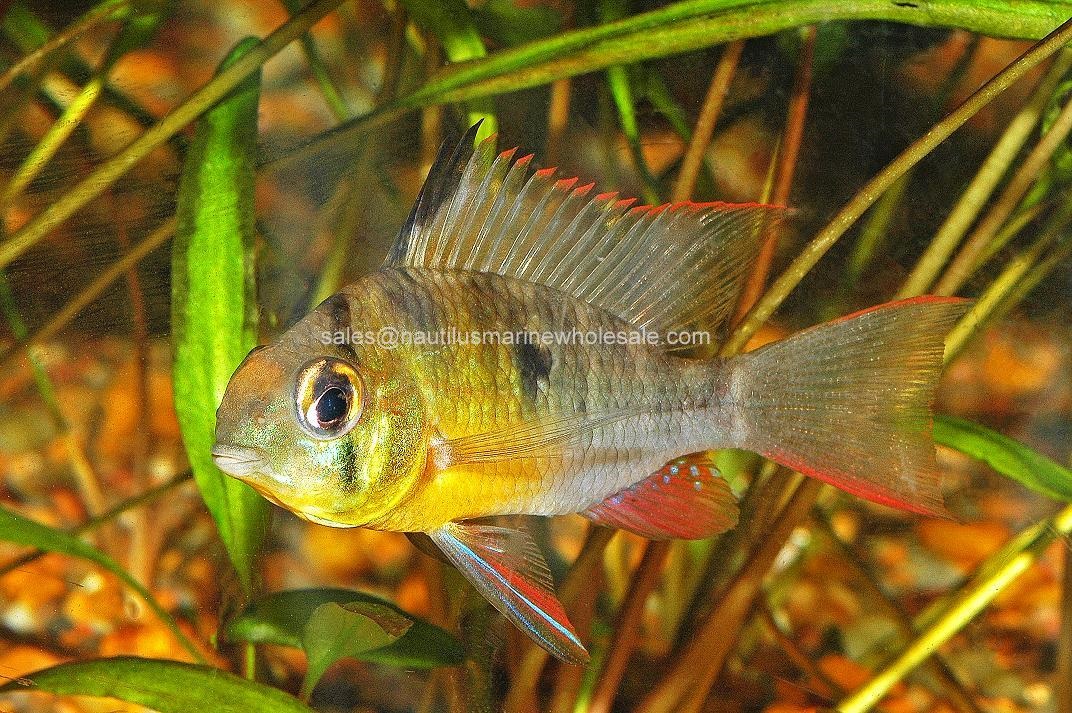 |
Ram Dwarf Cichlid | $9.99 | ||
| 5253 |  |
A Cacatuoides Double Red Cichlid | in stock | $39.99 | |
| 6681 |  |
Blue Ram Cichlid | in stock | $9.99 | |
| 1616 |  |
Bolivian Ram Cichlid | in stock | $14.99 | |
| 4113 |  |
Electric Blue Ram Cichlid | out of stock | $21.99 | |
| 1615 |  |
Gold Ram Cichlid | in stock | $9.99 | |
| 1009 |  |
Rummy Nose Tetra | in stock | $11.99 | |
| 983 |  |
Cardinal Tetra | out of stock | $9.99 | |
| 993 | 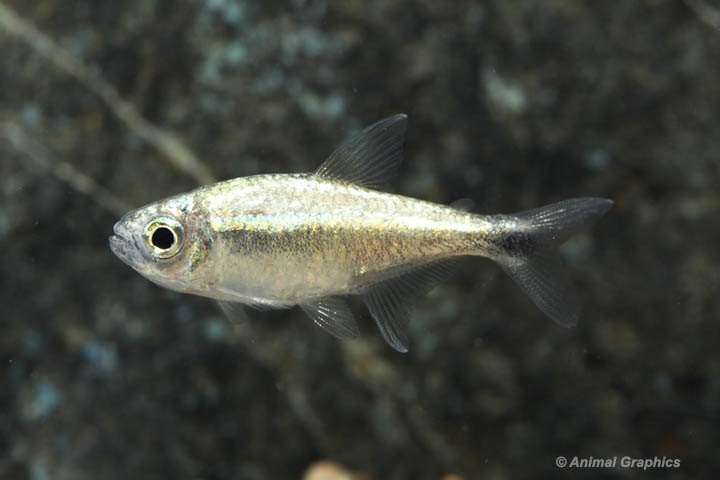 |
Gold Tetra | out of stock | $3.99 | |
| 2485 |  |
Ember Tetra | in stock | $4.99 | |
| 997 |  |
Lemon Tetra | in stock | $3.99 | |
| 987 |  |
Emperor Tetra | in stock | $7.99 | |
| 734 |  |
Kuhlii Loach | out of stock | $3.99 | |
| 8957 | 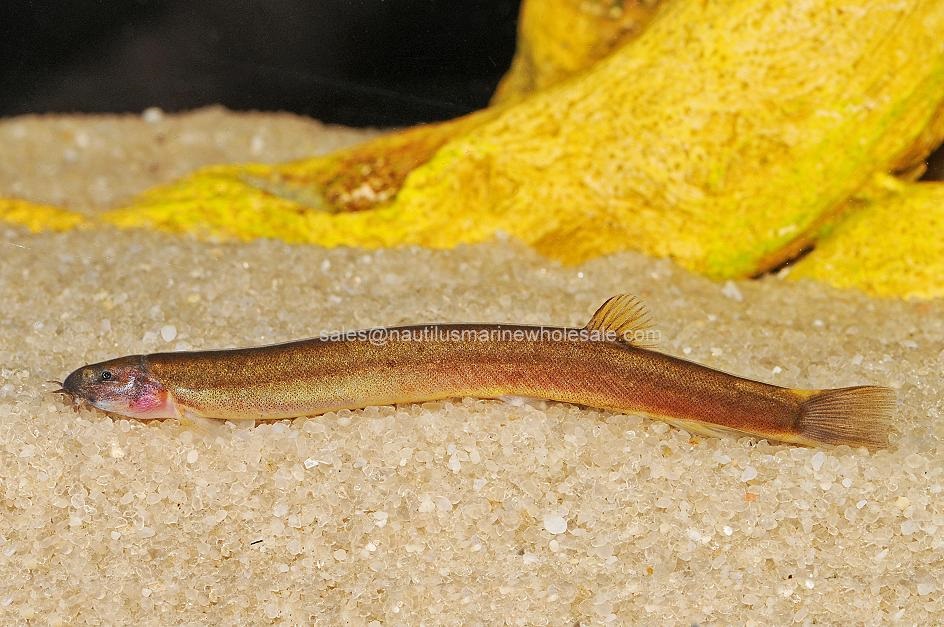 |
Black Kuhlii Loach | in stock | $3.99 | |
| P251 |  |
Red Root Floater Plant/ cup | in stock | $8.99 | |
| P52 |  |
Frogbit Plant | in stock | $8.99 | |
| P10 |  |
Amazon Sword Plant | in stock | $8.99 | |
| 7799X |  |
Valisneria Gigantea Plant | out of stock | $5.99 | |
| P12 |  |
Anacharis Plant | out of stock | $4.99 | |
| P29 |  |
Cabomba Plant | in stock | $6.99 | |
| 4406 |  |
Fancy Nerite Snail Freshwater | in stock | $4.99 | |
| 930 |  |
Nerite Snail- freshwater | in stock | $3.99 | |
| 8337 |  |
Red Racer Nerite Snail | in stock | $6.99 | |
| 5790 | 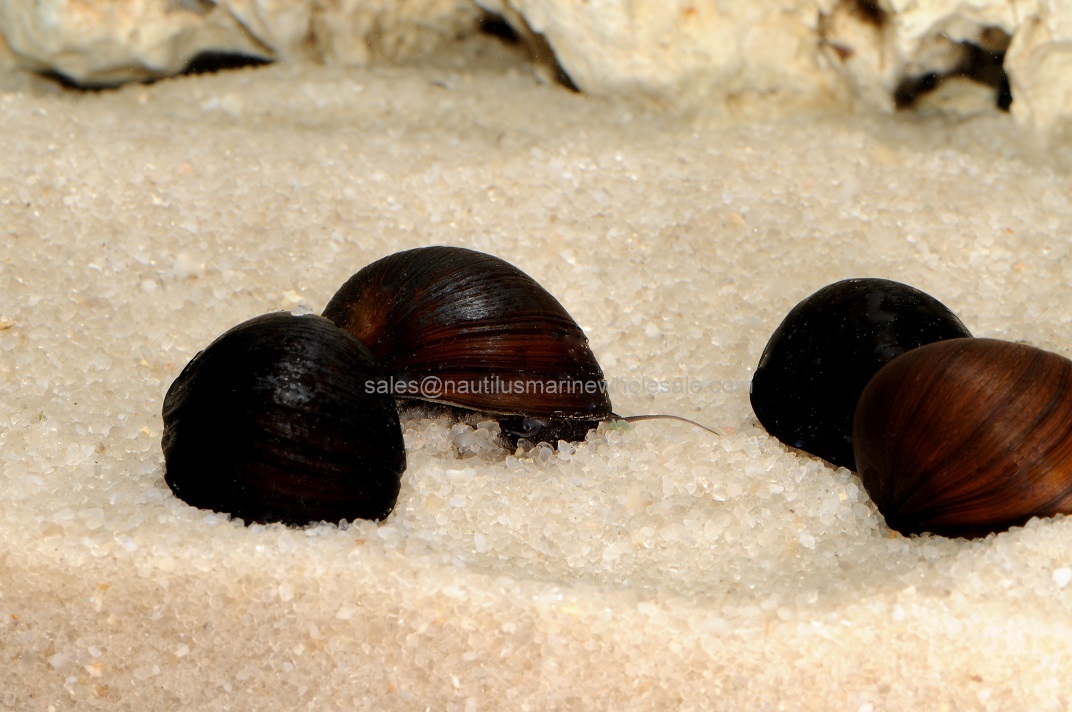 |
Black Racer Nerite Snail | out of stock | $5.99 |

